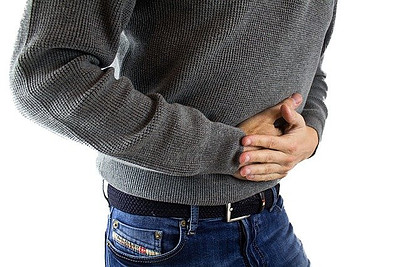By now, we have all figured out the most common coronavirus symptoms in humans: fever, loss of sense of smell and taste, shortness of breath, and dry cough. But scientists have found a certain order in which these symptoms appear, which could alert people even before the onset of COVID-19.
Coronavirus Symptoms in Humans
Fever and Malaise
In most people who developed COVID-19 disease, they developed a fever, a feeling of severe fatigue or malaise on the first day, while other symptoms were absent or very mild.
Digestive Difficulties Are Also One of the First Coronavirus Symptoms in Humans
Digestive difficulties in the form of diarrhea and nausea have also been shown to be one of the first signs of COVID-19, as it is often a sign that the body is fighting a serious infection.
Dry Cough
After the onset of fever, a dry cough usually follows soon. It usually occurs the same or the next day.
The Third Day Is Crucial
If you still have mild symptoms after the third day, you are probably among those lucky ones who will not develop a more serious form of COVID-19 disease. Namely, the scientists discovered that the third day is crucial by analyzing the data because then the patients’ symptoms usually worsen.
Difficulty Breathing
As the disease progresses, shortness of breath occurs around the fifth day. Patients describe this feeling as if someone is sitting on their chest or cannot breathe enough air.
Shortness of Breath
As the disease progresses, shortness of breath occurs around the fifth day. Patients describe this feeling as if someone is sitting on their chest or cannot breathe enough air.
Lung Failure
In severe cases of COVID-19 disease, around the eighth day, one of the most serious symptoms occurs – ARDS or Acute Respiratory Distress Syndrome. It is a respiratory failure characterized by the rapid onset of widespread pneumonia. Symptoms include shortness of breath, rapid breathing, and bluish discoloration of the skin. People who develop ARDS usually end up on oxygen or are intubated on a respirator.
Sepsis as the Most Dangerous Coronavirus Symptoms in Humans
In the most severe cases of COVID-19 disease around the ninth day, sepsis occurs as a strong response of the immune system to a serious infection. Sepsis is the most common cause of death in patients in the intensive care unit.
Severe Abdominal Pain
Those who were lucky and avoided sepsis often reported severe abdominal pain around the 10th or 11th day of infection, for which they were often admitted to the intensive care unit.
Loss of Appetite
This symptom also occurs in patients with moderate to severe COVID-19 and most commonly occurs in combination with severe abdominal pain.
18th Day of the Fight With Coronavirus Symptoms in Humans Is Crucial
For many patients, this is a crucial moment. Those whose condition is improving are usually discharged from the hospital for home care around the 18th day. For the most serious patients, often, the 18th day is the moment when things get worse, and death ensues.
But it should be borne in mind that this is an average course of the disease and that there can always be deviations.
Also, it should be added that in most patients, the incubation period, i.e., the period from the moment of infection to the first symptoms, lasts about five days, during which there are no symptoms.
Few Words About Asymptomatic Patients
Asymptomatic patients (infected who do not show signs of illness, do not cough, do not have a fever, etc.) can transmit the virus. It is still considered that infected patients who do not cough are less likely to pass the virus on or have to meet certain conditions (small unventilated rooms, close contacts, etc.). But transmissions are possible. According to some studies, they are also very common, as there are very many infected with mild and inconspicuous symptoms. An infected person can be infected two days before the onset of symptoms, so some experts warn that in addition to the current measures to curb the spread of infections, social distance is very important. Even healthy people who have no symptoms take all the recommended hygiene measures and maintain a safe distance.